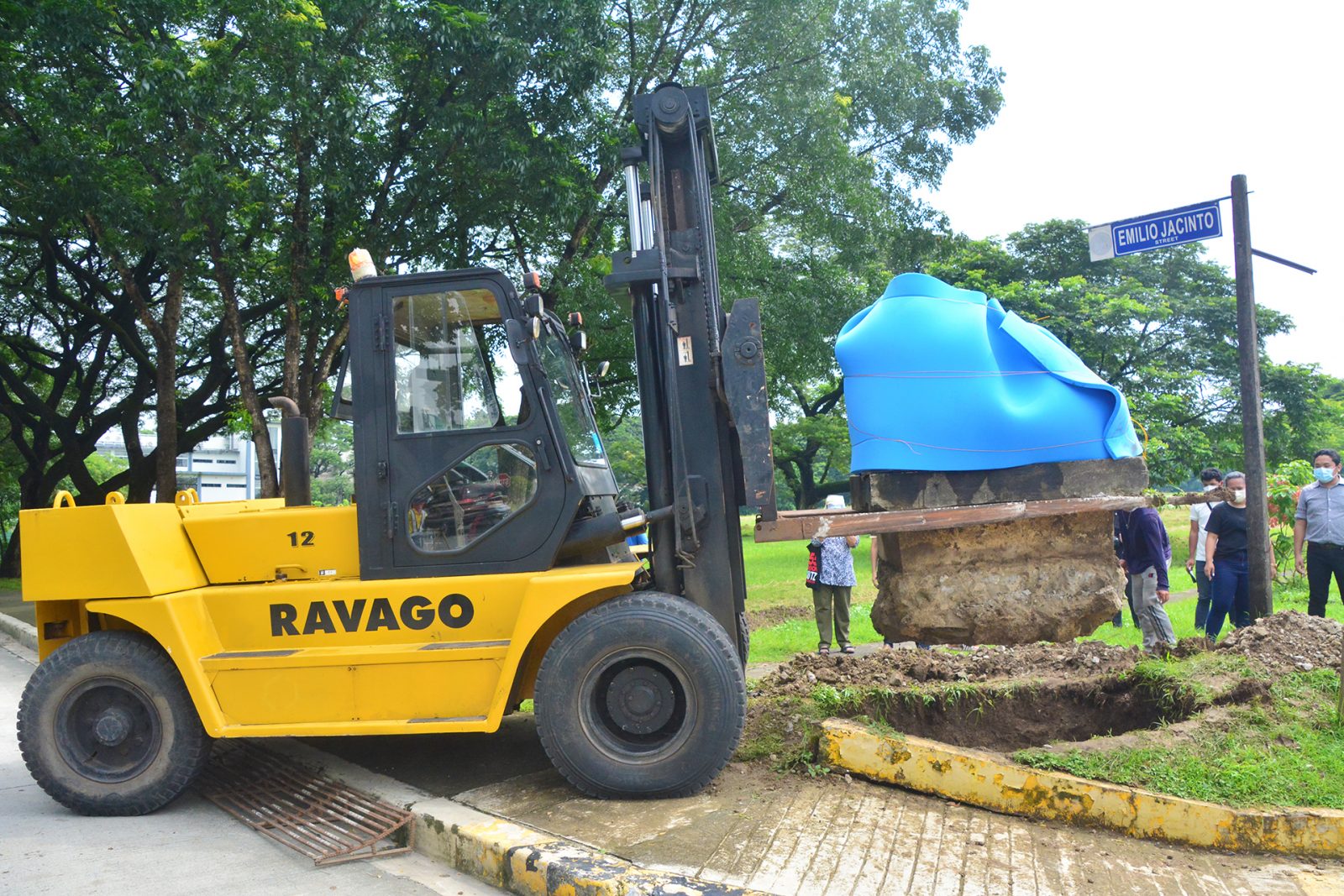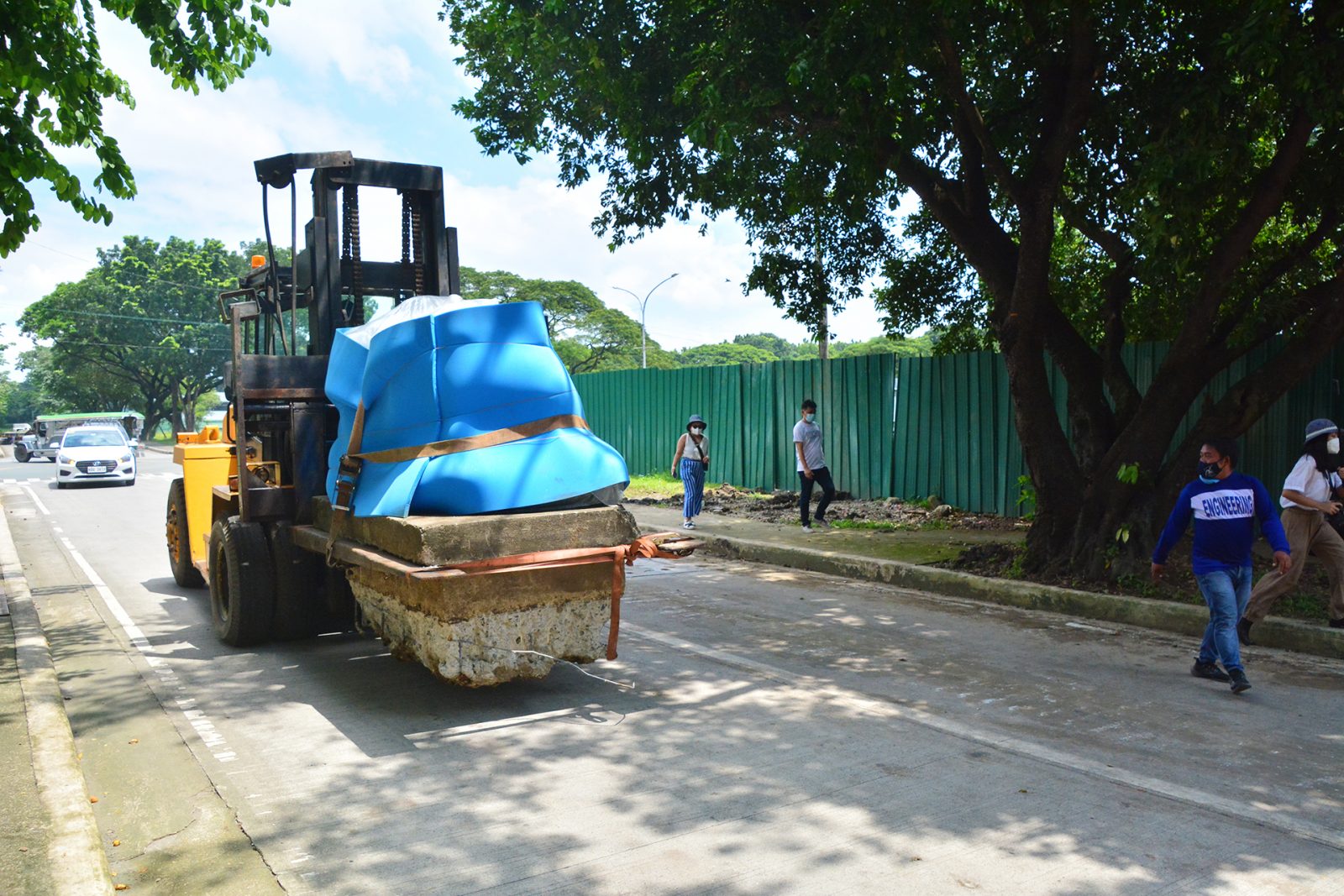
Ever wonder why the sculptures on opposite sides of the corner of University Avenue and E. Jacinto street suddenly vanished?
The artworks, “Captivity” and “Contemplation,” were moved to the UP Diliman (UPD) College of Fine Arts (CFA) as part of the art conservation project by the Project Management Office under the UP Office of the Vice President for Planning and Development. The two sandstone (adobe) sculptures were created in the 1960s by Ildefonso Cruz Marcelo, a CFA alumnus.
The conservation project. June Mercy P. Dalisay, head of the conservation project, said priority was given to these sculptures because of their aesthetic and symbolic value. Over time, “Captivity” and “Contemplation” became vulnerable to natural elements and their deterioration was alarmingly visible.
In 2020, tests were conducted during the rainy season to observe the effects of constant exposure to light and very strong rains.
“It was observed that the stone had been so weakened that its grains would crumble and fall off the surface with a slight touch. The pressure generated by very strong downpour over the years eroded the surface and has abraded the skin of the two sculptures,” Dalisay said.
The transfer. On Aug. 31, the project commenced. Under Dalisay’s supervision, the two sculptures were covered with bubble wrap to prevent further exposure to elements and damage. The sides or the perimeter area of the sculptures were also excavated using jackhammer to prepare the hauling.

The smaller sculpture, “Captivity,” with a dimension of 101.6 by 134.6 by 104.1 centimeters, was arranged to be hauled on Sept. 1, while the bigger artwork, “Contemplation,” measuring 208.2 by 139.7 by 182.5 centimeters, was scheduled on Sept. 2. However, due to heavy rains, the actual transfer was pushed to later dates.
Finally, on Sept. 13, “Captivity” was lifted using a forklift truck provided by contractor company Trilex. From its original location on the left side of University Avenue (facing Quezon Hall), it was carefully hauled and transported to CFA. Protruding parts of the sculpture’s base were chipped off using a jackhammer, then the sculpture was padded with foam to prevent possible damage. The same procedure was observed in the hauling and transfer of “Contemplation” on Sept. 15.
Presently, surface cleaning or removal of biological infestation (moss, lichen, plants, etc.) have been completed. The sculptures have now been left to thoroughly dry, so that all traces of moisture are removed.
The artist. Alice Guillermo’s article about the artist in the Cultural Center of the Philippines Encyclopedia of Philippine Art (Volume 5, Visual Arts, 2017) mentions how the sculptor, Marcelo, was known for using adobe as his medium.
He earned his bachelor of fine arts, major in sculpture, from UP in 1962. An East-West scholar to the United States from 1964 to 1965, he took graduate studies at the University of Hawai’i and Pratt Institute in New York, USA.
He was awarded the 1961 Republic Cultural Heritage Award in 1961. He also received recognitions from the Art Association of the Philippines for his works: “Man and Crocodile” (second prize, 1960), “Superstructure” (first prize, 1961), “Captivity” (first prize, 1962), and “Offering” (second prize, 1963).
